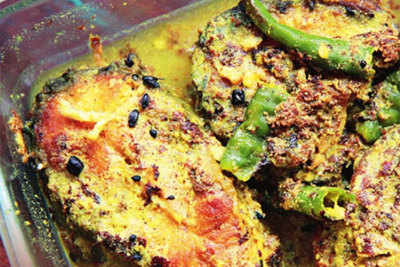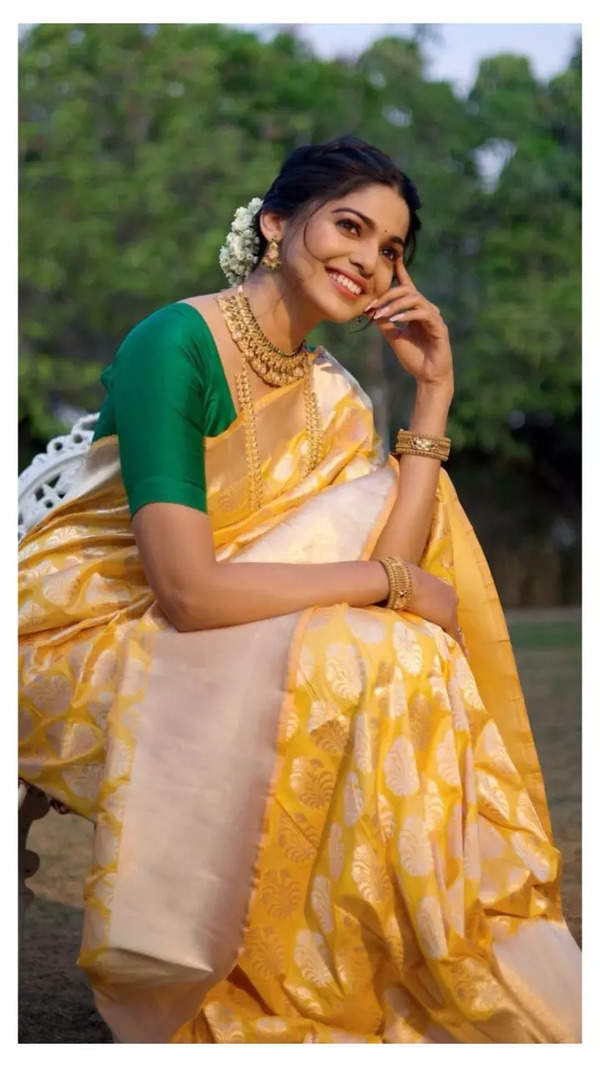Trending
This story is from August 8, 2014
The great Bengali divide
Oscillating from creamysweet to fiery red, here's separating the culinary style of the Bangals from the Ghotis.

Oscillating from creamysweet to fiery red, here's separating the culinary style of the Bangals from the Ghotis.
Bengalis are all about maach bhaat (fish curry and rice). That's a given. While that paints a broad picture of Bengali cuisine, foodies must have wondered why some dishes taste sugary, while others wreck fiery havoc on their taste buds. The answer lies in the two distinct groups of Bengalis - Bangals and Ghotis - who together have shaped and styled the food of Bengalis; a sort of sweetish ying to a spicy yang.
The divide between Bangals and Ghotis isn't religious or caste-centric. Before Bengal split into West Bengal and Bangladesh, it was one entity. Partition sparked a split - the ancestral families of Bangals hail from erstwhile East Bengal, while Ghotis have roots in West Bengal. "The easiest way I can describe the Bangal-Ghoti divide is by explaining the ilish (hilsa) and chingri (prawn) situation", says Sulagna Chakravarthy, a Bangal and secondary school teacher, who made Mumbai her home 20 years ago. Her ancestors hailed from Bikrampur, a region near Dhaka in Bangladesh. "In Kolkata," she says, "football and food are taken seriously. When East Bengal (staunchly supported by the Bangals) wins a match, we celebrate with jhal (spicy) ilish maach. When Mohun Bagan wins, the Ghotis celebrate with galda chingri maacher malai curry (jumbo prawns in coconut curry), which is mishti (sweet)".
Bangals are notorious for their love of fish and meat, a la decadent curries. Ghoti meals are a relatively lighter affair, and their dinner table is often marked by simple gravies like shukto, a minimal vegetable stew made with brinjal, raw banana, potato, French beans and pumpkin. They are also known for chochori, a light vegetarian dish of drumsticks and potato in mustard.
And the difference between the two groups is evident in choice of fish, too. While Ghotis prefer sweet freshwater rohu and katla, Bangals favour hilsa, but happily devour all varieties including dried fish or shutki, with origins in Chittagong.
In Mumbai, the go-to shutki remains Bombay Duck. Whichever way it is cooked, dried or in gravy, it must be pungent.
Over the years, of course, the divide has thinned, especially in cities like Mumbai which is home to probashis (Bengalis who live outside West Bengal). "Who can say no to Ghoti dishes like mochar ghonto (a sweet coconut-based dish of banana flowers and potato), aloo potol (potatoes with parwal) and lau chingri with bodi (prawns cooked with bottle gourd and small fried dumplings made from moong dal)?" asks Meenakshi Mukherjee, a homemaker and artist who is an Andheri resident.
Chakravarthy explains why Bengalis in Mumbai end up cooking a mash-up of the sub-cuisines. "Mumbai doesn't offer all the fresh ingredients central to our cooking, especially special varieties of fish. It's never quite the same or frightfully expensive. So, we end up serving a mish-mash."
On special occasions, though, roots call, and a lavish spread true to authentic tradition is laid out for relatives. And another difference grows evident, says Mukherjee. "We Ghotis, like our food and demeanour to be sweet. Bangals are notorious for being in your face; they'll make sure you try all their dishes," she winks.
Bengalis are all about maach bhaat (fish curry and rice). That's a given. While that paints a broad picture of Bengali cuisine, foodies must have wondered why some dishes taste sugary, while others wreck fiery havoc on their taste buds. The answer lies in the two distinct groups of Bengalis - Bangals and Ghotis - who together have shaped and styled the food of Bengalis; a sort of sweetish ying to a spicy yang.
The divide between Bangals and Ghotis isn't religious or caste-centric. Before Bengal split into West Bengal and Bangladesh, it was one entity. Partition sparked a split - the ancestral families of Bangals hail from erstwhile East Bengal, while Ghotis have roots in West Bengal. "The easiest way I can describe the Bangal-Ghoti divide is by explaining the ilish (hilsa) and chingri (prawn) situation", says Sulagna Chakravarthy, a Bangal and secondary school teacher, who made Mumbai her home 20 years ago. Her ancestors hailed from Bikrampur, a region near Dhaka in Bangladesh. "In Kolkata," she says, "football and food are taken seriously. When East Bengal (staunchly supported by the Bangals) wins a match, we celebrate with jhal (spicy) ilish maach. When Mohun Bagan wins, the Ghotis celebrate with galda chingri maacher malai curry (jumbo prawns in coconut curry), which is mishti (sweet)".
Bangals are notorious for their love of fish and meat, a la decadent curries. Ghoti meals are a relatively lighter affair, and their dinner table is often marked by simple gravies like shukto, a minimal vegetable stew made with brinjal, raw banana, potato, French beans and pumpkin. They are also known for chochori, a light vegetarian dish of drumsticks and potato in mustard.
The Bangal version of chochori includes tiny fish like morola (mola carplet) and puti maach (spot-fin swamp barb). The incorporation of spices and roots ground into pastes in Bangal cooking, gives their sauces and meats a strong, rich taste. They are known for fiery foods due to their liberal use of green chilies.
And the difference between the two groups is evident in choice of fish, too. While Ghotis prefer sweet freshwater rohu and katla, Bangals favour hilsa, but happily devour all varieties including dried fish or shutki, with origins in Chittagong.
In Mumbai, the go-to shutki remains Bombay Duck. Whichever way it is cooked, dried or in gravy, it must be pungent.
Over the years, of course, the divide has thinned, especially in cities like Mumbai which is home to probashis (Bengalis who live outside West Bengal). "Who can say no to Ghoti dishes like mochar ghonto (a sweet coconut-based dish of banana flowers and potato), aloo potol (potatoes with parwal) and lau chingri with bodi (prawns cooked with bottle gourd and small fried dumplings made from moong dal)?" asks Meenakshi Mukherjee, a homemaker and artist who is an Andheri resident.
Chakravarthy explains why Bengalis in Mumbai end up cooking a mash-up of the sub-cuisines. "Mumbai doesn't offer all the fresh ingredients central to our cooking, especially special varieties of fish. It's never quite the same or frightfully expensive. So, we end up serving a mish-mash."
On special occasions, though, roots call, and a lavish spread true to authentic tradition is laid out for relatives. And another difference grows evident, says Mukherjee. "We Ghotis, like our food and demeanour to be sweet. Bangals are notorious for being in your face; they'll make sure you try all their dishes," she winks.
End of Article
FOLLOW US ON SOCIAL MEDIA









